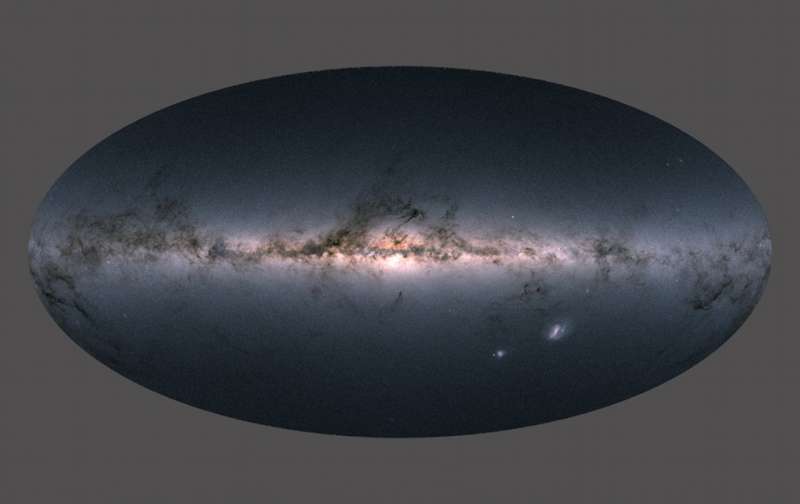Gaia's Milky Way

Explanation:
This grand allsky view
of our Milky Way and nearby galaxies is
not a photograph.
It's a map based on individual measurements for
nearly 1.7
billion stars.
The astronomically rich data set used to create it, the
sky-scanning
Gaia satellite's
second data release,
includes remarkably precise determinations of position, brightness, colour, and
parallax distance for 1.3 billion stars.
Of course, that's about 1 percent of the total number of stars in
the Milky Way.
Still, the flat plane of our galaxy dominates the view.
Home to most
Milky Way stars it stretches across the center
of Gaia's stellar data map.
Voids and rifts along the galactic plane correspond to
starlight-obscuring interstellar dust clouds.
At lower right are stars of the Large and Small Magellanic Clouds,
neighboring galaxies that lie just beyond the Milky Way.
Authors & editors:
Robert Nemiroff
(MTU) &
Jerry Bonnell
(USRA)
NASA Web Site Statements, Warnings,
and Disclaimers
NASA Official: Jay Norris.
Specific
rights apply.
A service of:
LHEA at
NASA /
GSFC
& Michigan Tech. U.

